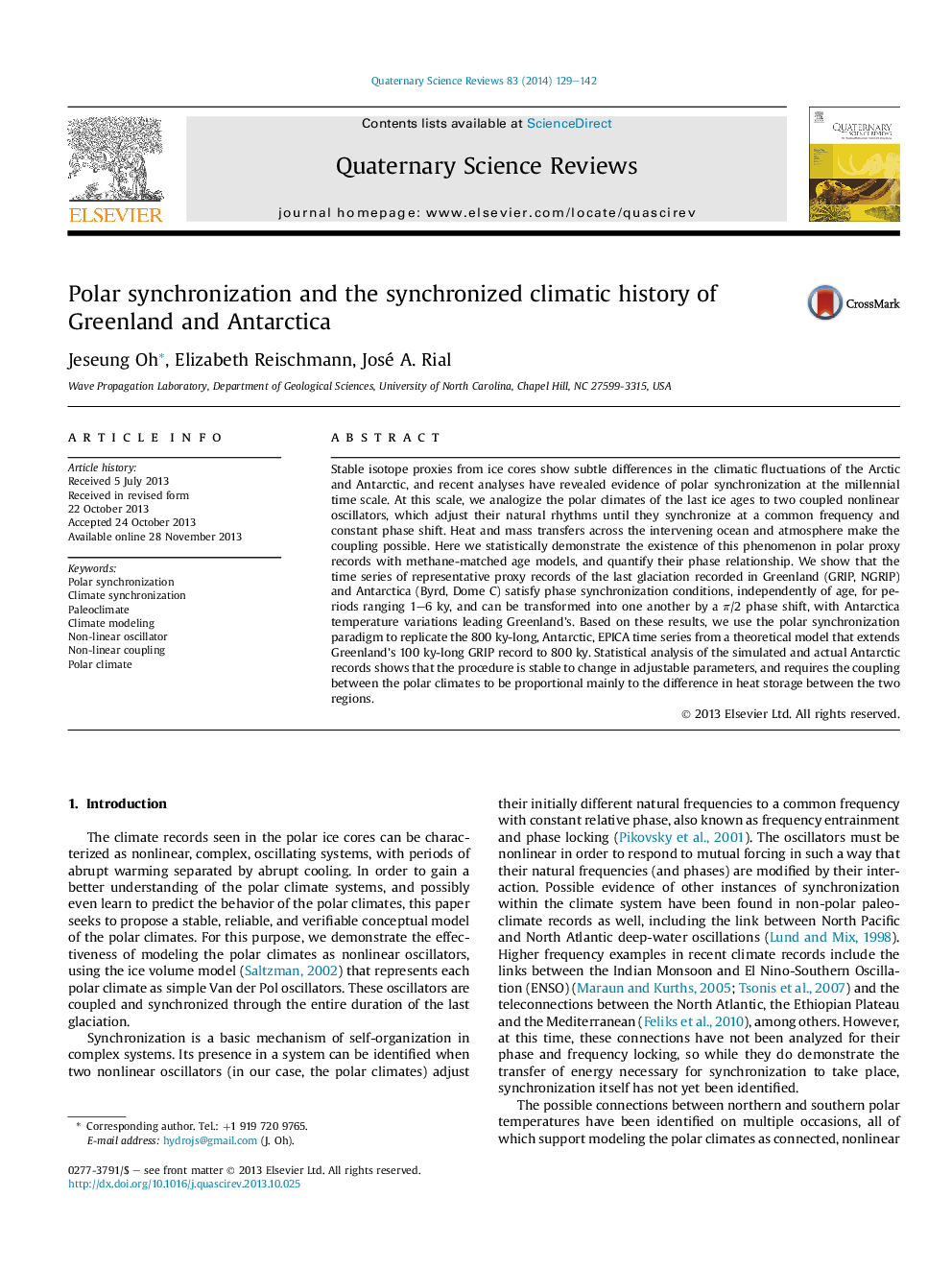| Article ID | Journal | Published Year | Pages | File Type |
|---|---|---|---|---|
| 6446611 | Quaternary Science Reviews | 2014 | 14 Pages |
Abstract
Stable isotope proxies from ice cores show subtle differences in the climatic fluctuations of the Arctic and Antarctic, and recent analyses have revealed evidence of polar synchronization at the millennial time scale. At this scale, we analogize the polar climates of the last ice ages to two coupled nonlinear oscillators, which adjust their natural rhythms until they synchronize at a common frequency and constant phase shift. Heat and mass transfers across the intervening ocean and atmosphere make the coupling possible. Here we statistically demonstrate the existence of this phenomenon in polar proxy records with methane-matched age models, and quantify their phase relationship. We show that the time series of representative proxy records of the last glaciation recorded in Greenland (GRIP, NGRIP) and Antarctica (Byrd, Dome C) satisfy phase synchronization conditions, independently of age, for periods ranging 1-6Â ky, and can be transformed into one another by a Ï/2 phase shift, with Antarctica temperature variations leading Greenland's. Based on these results, we use the polar synchronization paradigm to replicate the 800Â ky-long, Antarctic, EPICA time series from a theoretical model that extends Greenland's 100Â ky-long GRIP record to 800Â ky. Statistical analysis of the simulated and actual Antarctic records shows that the procedure is stable to change in adjustable parameters, and requires the coupling between the polar climates to be proportional mainly to the difference in heat storage between the two regions.
Related Topics
Physical Sciences and Engineering
Earth and Planetary Sciences
Geology
Authors
Jeseung Oh, Elizabeth Reischmann, José A. Rial,
